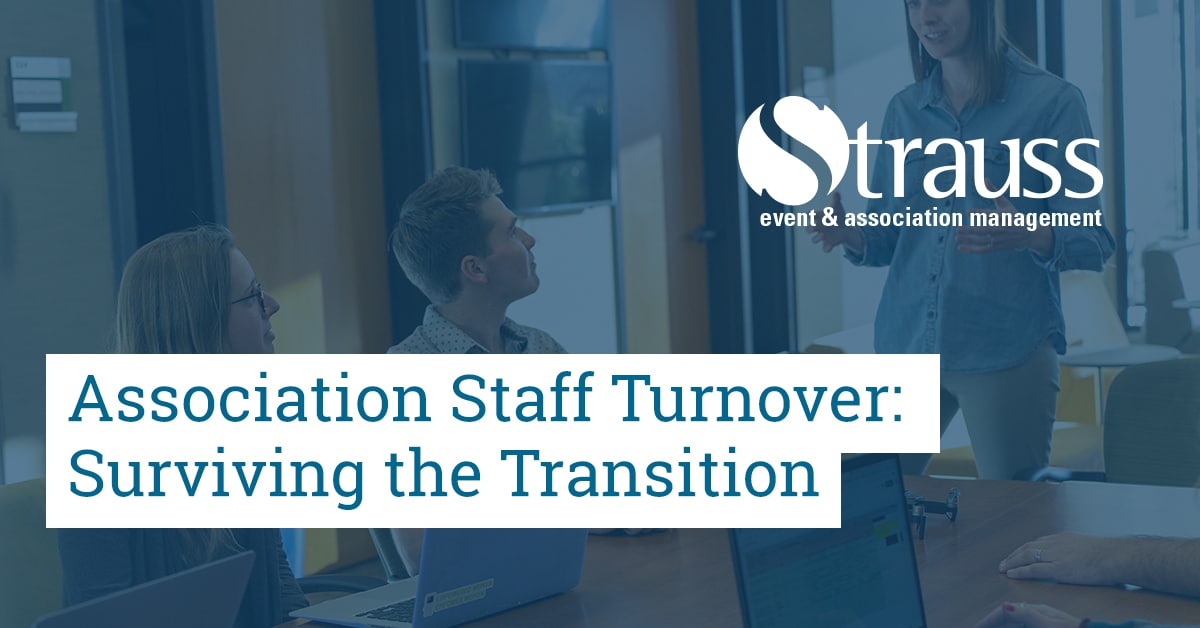For associations, staff turnover happens. Whether it’s a reassignment of duties best suited for the staff’s skill set, a promotion to a new position within the association, or leaving the association for other ventures. Associations need to be ready to adapt to staff change while showing no delay in service to members and board volunteers.
Recruiting the perfect staff takes a long time. At a Human Resources session at a Canadian Society of Association Executives event that I attended, the facilitator mentioned that sometimes it takes years to find the right candidate. Obviously, an association cannot wait years for the perfect candidate. Here are some thoughts to consider when filling the void while maintaining the high level of service.
Who Within the Association can Take Over Tasks During the Candidate Search?
Are there staff within the organization that can take on additional tasks? Can tasks be divided among staff to ensure important details are not missed? Quite often the Chief Staff Officer will take over these tasks, but they will need additional back up.
An important practice for all associations is to have back ups for each staff position. That means someone else should be trained to understand the association business which that staff was responsible for. This person can aid during transition as well as during vacations or other absences.
Remember it is also very important that the Chief Staff Officer know each staff member’s role in some capacity and is familiar with daily tasks, such as finding members in the member management system.
Does Your Association Have a Staff Training Plan?
A staff training plan can be developed internally and tweaked when needed. This plan should be used for all association positions. Ideally, the staff member vacating the position would note important tasks that the new candidate should understand, as well as a timeline of important projects that are of priority. It is important that tasks that of urgent priority are communicated to the entire team.
As an Association Management Company, we are fortunate to have many experts on staff who collaborate to train our new team members. A collaborative training plan helps to introduce the entire team to the newest member, and also provides different perspectives on the role to help the incoming employee be set up for success.
Does Your Association Have Standard Operating Procedures?
If you type in “Standard Operating Procedures” in our article search engine, many very informative articles will pop up on how important this tool is. Read here for an introduction to an SOP.
It is imperative that associations use this tool. I have used it many times to reference how to accomplish tasks properly. In fact, I have one printed for each association I manage, available for easy access when needed.
In an SOP you define the timeline of tasks for the association, the tools the association uses, and how to use these tools. We include important log-in information, templates, and paths to find previous years’ work. The goal is that the association doesn’t reinvent the wheel each time a staffing transition occurs, rather the wheel just keeps on turning.
What is the Culture of Your Association?
One of the most important things is hiring for fit. A huge component of association management culture is going above and beyond and jumping in where needed. Ensure you have those staff members who understand the need of wearing many different hats. Encourage and reward this behaviour within your organization. This work ethic is imperative for many situations, and especially for staffing gaps.
While it is very imperative to have a diverse workplace, it is also important to ensure the staff are compatible to create success behind the scenes.
How to Ensure Success While Filling the Staffing Gap at Your Association.
Ensure that the standards your association has implemented for member and volunteer communications continues to be executed while you are searching for your next employee. Ensure email inboxes are forwarded and staff are responding to enquiries within your internal set timeframe. If there is a project or event in the works, maintain momentum by reassigning personnel to keep the planning forging forward.
When the new candidate is trained and ready to hit the ground running, transition this person into their role carefully and patiently. Set them up for success without causing any pause in service to the association.
Staff transition happens; being prepared for it is key. Having a team eager to work together for a common goal will make the process much less painful and will eliminate any gaps in processes and service to its members.

